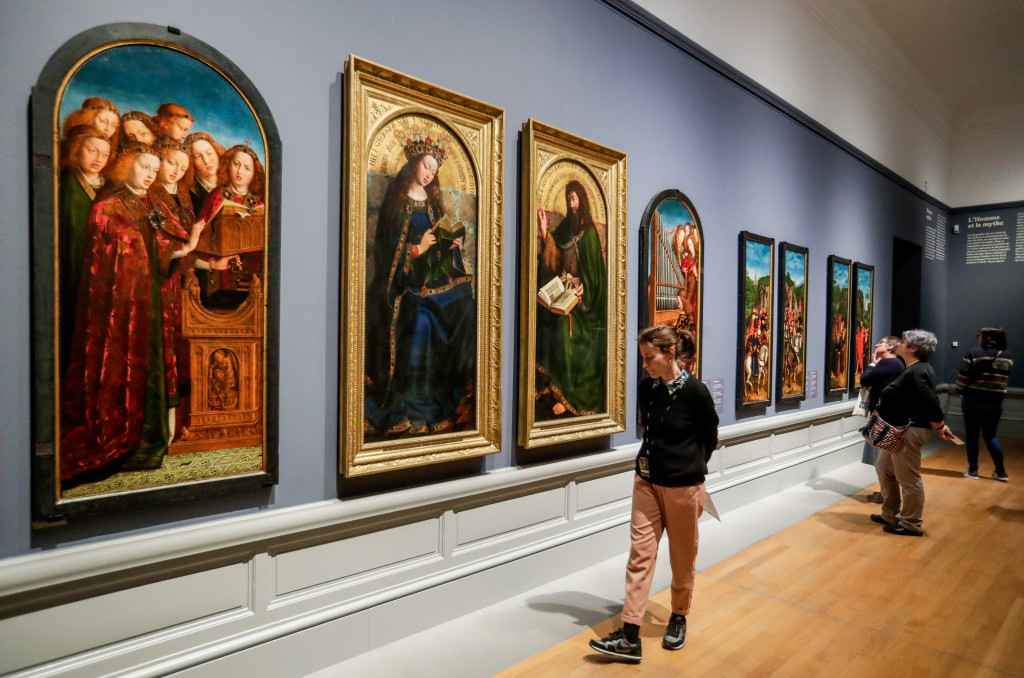[ad_1]
After the initial coronavirus shutdown, Brad Taylor, who oversees art for the insurance broker HUB International, saw a huge slowdown in activity—and then experienced a flood of questions. Collectors quickly started to realize that art storage facilities would be locked down, and around the world, art shipments weren’t going as planned. Works were stuck on loan to an exhibition, with a packer or shipper, at a gallery on consignment for what was supposed to be a couple days, at a freeport for viewing. What would collectors need to do with their insurance?
Taylor and his team at HUB, where he oversees a dedicated practice for providing insurance and risk management solutions for galleries, collectors, museums, foundations, or anybody who is entrusted with a collection of art or any sort of valuables, quickly got involved. Taylor works with the world’s top collectors, and he began consulting with them about the policies guiding their transactions. “A lot of policies have lower limits for collectors for items that are and outside their own homes or own storage locations, and the carriers have responded well, as long as you are making them aware,” he said.
One area is key: determining a work’s insurance value. “Just because the art market slowed down doesn’t mean the value of items has necessarily dropped,” he said. “In some cases it may even be rising based on small number of private transactions that could increase the value. It’s incredibly important right now more than ever that you have a policy that responds in real time to change in values in your collection.”
Brian Frasca, the CEO of the three-year-old firm VF Global Insurance (VFGI), agreed with Taylor’s line of thinking. Frasca specializes in art, and works with galleries, museums, and collectors—including several on ARTnews’s Top 200 Collectors list. He stressed that during a time of uncertainty, collectors need to understand how their insurance works and how their holdings are valued.
“Right now, we are in this market where you don’t know what’s going to happen in the next six months,” Frasca said. “You don’t know what the value of your art is going to be at the time of a loss, but it’s safe to say that it probably isn’t going to be higher than now. And so, it’s a good idea to be on an agreed-value policy right now.”
With the art world staying at home, and art fairs on hold, there are certain aspects of insurance that take on less precedence—and certain ones that become only more important.
“We are providing solutions for several galleries who regularly attend art fairs and have high transit limits as a result,” Frasca said. “We’re able to get much lower rates for both galleries and collectors, and quoting stay-only coverage or limited transit coverage until things normalize.”
Another high-level concern, Taylor said, is cost. “People looking at what they are spending more than ever given the uncertainty,” he said. “Insurance has been relatively affordable over the past few years, relative to 15 to 20 years ago,” but even so, people are looking for ways to save. “In some cases the exposure or risk that policy underwritten has been reduced because of frieze in market.” Like Frasca, he pointed to the issue of transit. “A collector might have had an active collection and their insurance carrier anticipated that, and now artworks are no longer being moved around. Carriers have in some cases understood that and been willing to credit the policyholder.”
Jennifer Schipf is global leader, art, for AXA XL, one of the carriers most trusted in the art world. “In the early stages of the pandemic, art dealers and/or collectors were faced with the immediate challenge of determining who is responsible for the security of a piece of art if a collector/dealer was required to leave an art fair early or could not make immediate arrangements for a piece of art to return home safely,” said Schipf. “Our client’s primary concern is to protect the artwork and they look to us for guidance to navigate extraordinary situations, such as a pandemic.”
“Security precautions,” she said, “are one of the first concerns. Protecting art physically has become a returned focus.” Schipf advised that collectors stay in close communication with their trusted service providers, from storage to freight forwarders, to conservators. “Have open communication lines so that you will know if something changes or worsens.” In the New York area during Hurricane Sandy, she said, “there was a panic to move artworks as quickly as possible. Some collectors were more prepared than others because they had ongoing relationships with their trusted vendors.”
“Everyone has to start imagining the unimaginable and preparing for unusual circumstances,” Schipf said. “Nothing is outside the realm of possibility at the moment.”
[ad_2]
Source link


